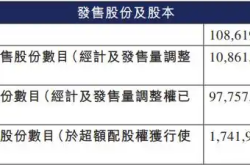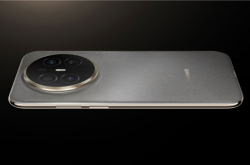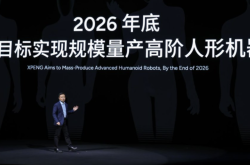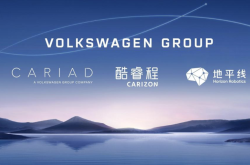Xiaomi and Li Auto: The Clash of Titans in the EV Market
![]() 06/30 2025
06/30 2025
![]() 733
733
Written by | Xu Zhi
Edited by | Wu Xianzhi
Xiaomi's YU7, the most anticipated automotive "game-changer" of the year, has made a splash with over 200,000 pre-orders in just three minutes and more than 289,000 within an hour, surpassing last year's SU7.
While YU7 may not match the market buzz of Xiaomi's inaugural model, SU7, it boasts impressive capabilities with standard NVIDIA Thor chips, lidar, end-to-end assisted driving, an 800V platform, and 5.2C fast charging. While it doesn't quite leapfrog the competition, it certainly holds its own.
The success of YU7 speaks more to Xiaomi's marketing prowess and the Chinese public's fondness for SUV models rather than any groundbreaking innovation.
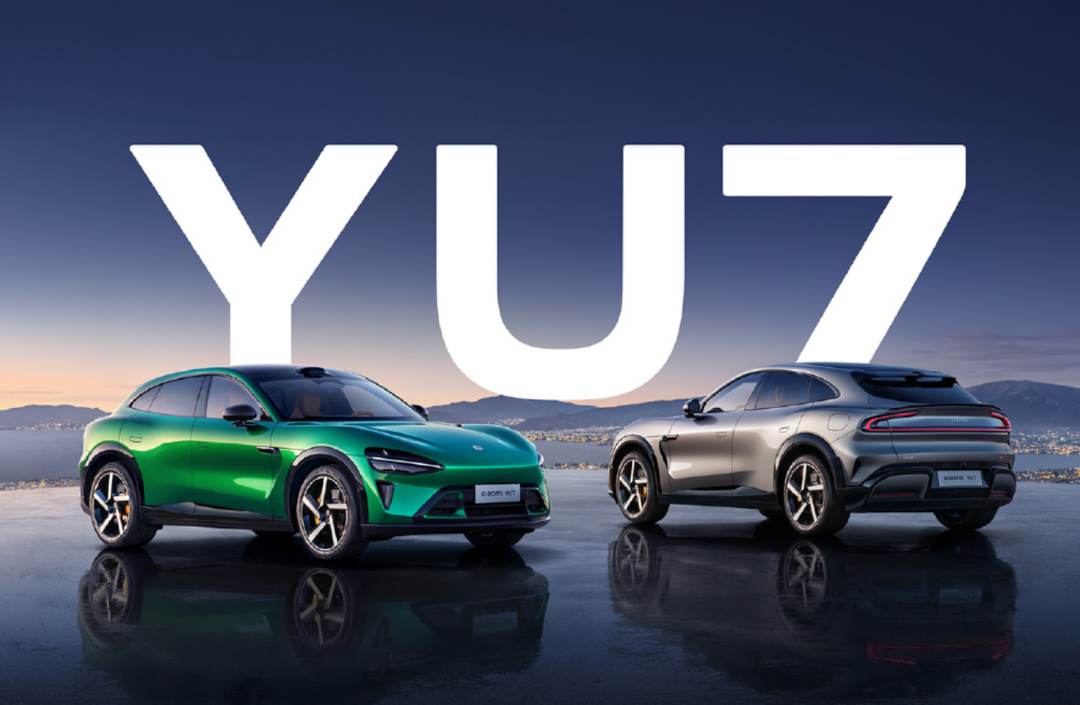
Last night was sleepless for many in the new energy vehicle (NEV) industry. While everyone anticipated YU7's success, the sheer volume of orders caught everyone by surprise. Competitors in the 200,000-350,000 yuan pure electric SUV segment were particularly hard-hit, facing what seemed like a one-sided "massacre."
Virtually all NEV companies, from BYD to AITO, will now have to contend with Xiaomi YU7's "indiscriminate attack." The question now is how they will respond and where the opportunities lie.
Among them, Li Auto may be the most affected.
Last year's failure of the MEGA significantly slowed Li Auto's transition to pure electric vehicles. Just as Li Auto was regrouping for a comeback, Xiaomi's YU7 emerged, casting a shadow over the prospects of the i8 and i6.
The Early "Secret War"
Even during YU7's pre-launch phase, the undercurrents were already evident.
On June 23, Lei Jun posted on Weibo, further elucidating the rationale behind YU7, emphasizing its blend of "luxury sports performance" and "luxury comfort."
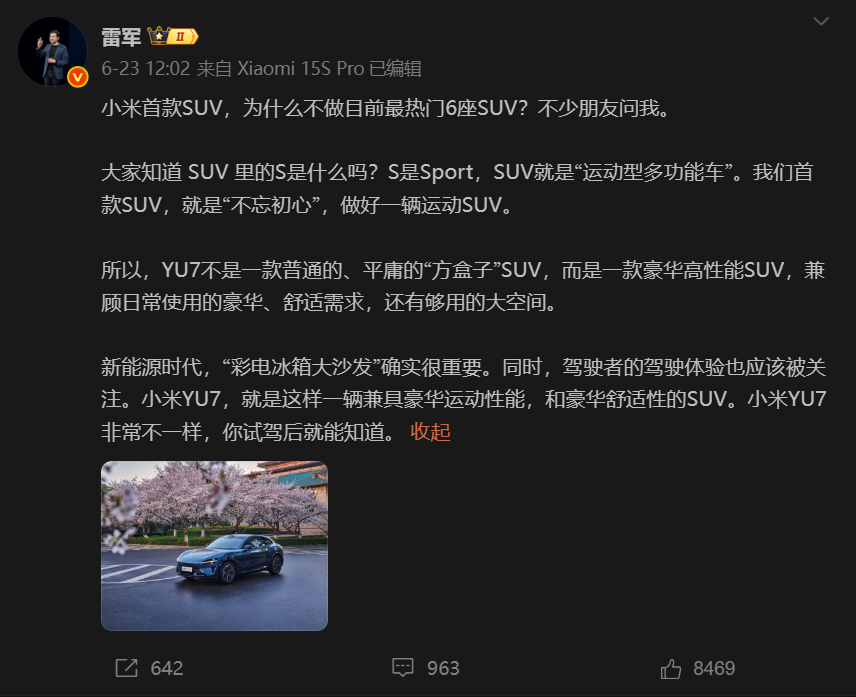
To the general public, Lei Jun's post might have seemed like mere promotion. However, in the automotive industry, its targeting was unmistakable.
A prime example is the "big TV, fridge, and sofa" concept. As the pioneer in integrating and popularizing this concept, Li Auto established its brand identity through comfortable seats, large screens, and in-car fridges, creating a "mobile home" experience. This has become a defining feature of Li Auto.
Furthermore, terms like "6-seater SUV," "sufficient large space," and even "boxy SUV" easily evoke Li Auto in the minds of industry insiders. The i8, inspired by the MEGA, shares a distinctly boxy design, fitting the "boxy SUV" description from certain angles.
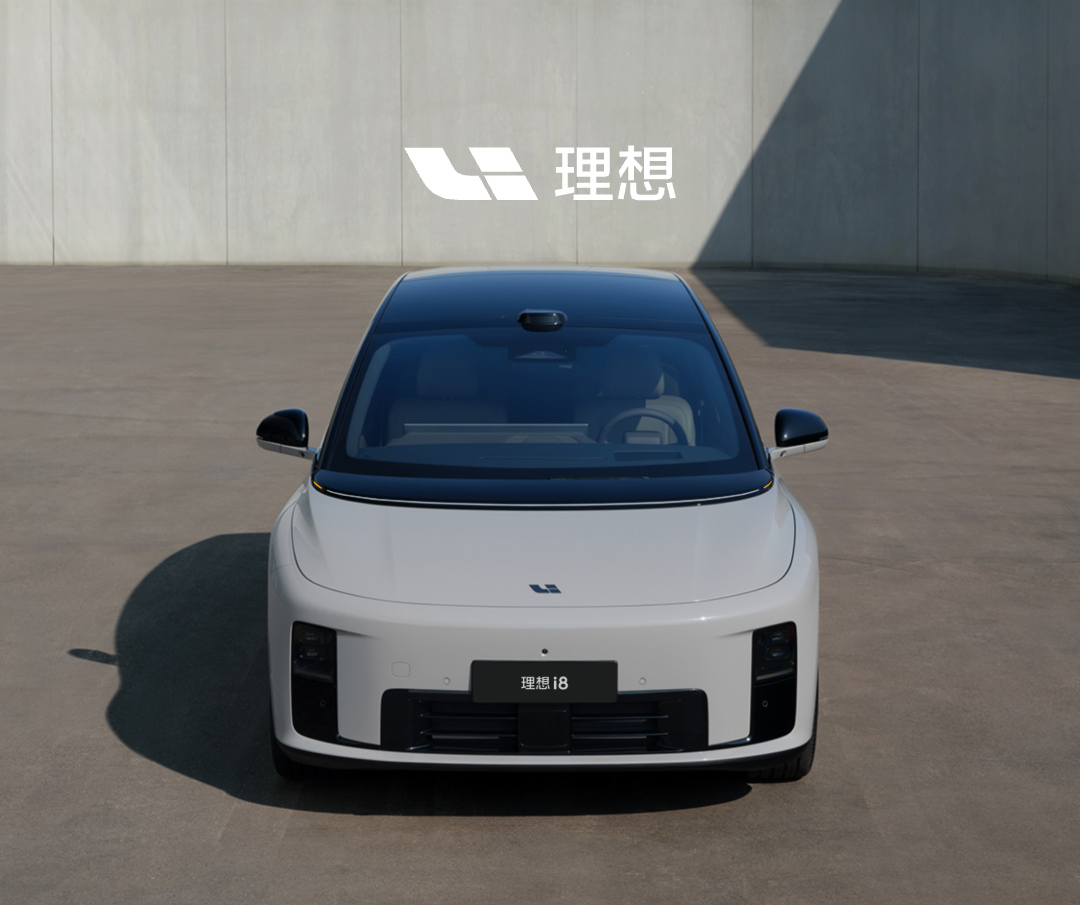
With Lei Jun's extensive experience in the automotive industry, he couldn't have been unaware of these nuances. Though he didn't name names, Xiaomi might as well have revealed Li Auto's "identity code."
The only logical conclusion is that Xiaomi intends to expand into Li Auto's core market of family users, thereby increasing YU7's incremental scale.
Lei Jun's conference performance also underscored this point. He not only mentioned YU7's "balance for family use" but also repeatedly highlighted designs tailored to children, female drivers, and pets—common promotional points for family-oriented models.
Compared to SU7, YU7 signifies several shifts for Xiaomi: it aims for a broader audience beyond performance enthusiasts and shifts focus slightly from "driving experience" to "riding experience," as evidenced by the "motion sickness mode."
In essence, YU7 embodies Xiaomi Automobile's "all-in-one" approach, blending high performance, handling, and comfort, even specifically targeting Apple users. As Lei Jun put it, it's a car that "combines sports, comfort, and luxury."
Xiaomi and Li Auto previously enjoyed a harmonious relationship. At last year's SU7 conference, leaders from NIO, XPeng, and Li Auto showed their support, and Lei Jun expressed gratitude, noting, "They've given me much advice over the past three years, helping me avoid many pitfalls." Li Xiang even revealed on Weibo that when MEGA faced a public opinion crisis, Lei Jun's team actively helped resolve it, prompting Li Xiang to offer an L6 as a token of gratitude, which Lei Jun politely declined.
Business is devoid of permanent enemies or rivals. Xiaomi and Li Auto previously got along well due to the lack of direct competition. Now that Li Auto's "core base" is threatened, Li Xiang isn't willing to sit idly by.
Li Xiang retweeted Lei Jun's Weibo post, using it to promote the upcoming i8 while subtly emphasizing YU7's "sports orientation" and Li Auto's "family orientation." He Xiaopeng and Li Bin quickly followed suit, each congratulating YU7's sales success and leveraging the traffic to promote their upcoming G7 and Lido L90.
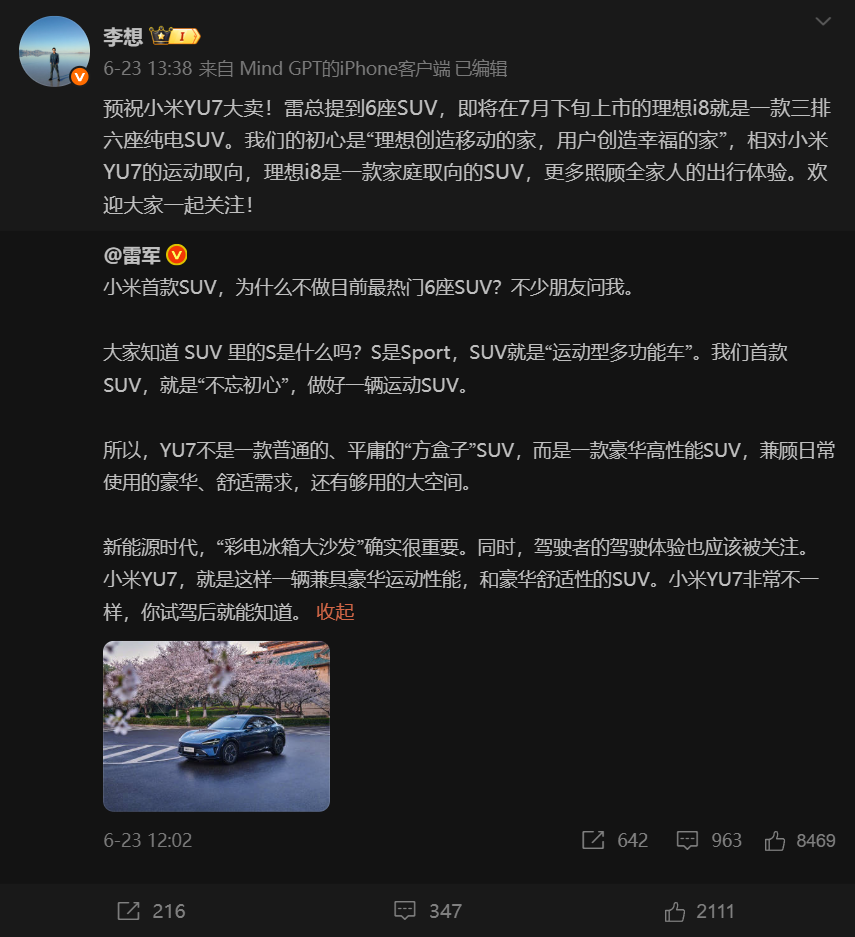
With Li Auto's i6 in the mix, NIO, XPeng, Li Auto, and Xiaomi will compete head-on in the same segment for the first time in the second half of this year. The transition from managing respective territories to significantly overlapping product positioning and markets promises intense competition.
Where Are Li Auto's Opportunities?
Li Auto cannot remain unfazed by Xiaomi YU7's sales performance.
When Xiaomi first ventured into the automotive sector, it was widely believed that XPeng would be its biggest rival due to their shared tech-geek philosophy and youthful branding. No one could have predicted that Xiaomi would soon become a competitor to Li Auto.
Judging from Xiaomi Automobile's layout, it largely mirrors Tesla's path to success. For SU7 and YU7 to achieve the same "two cars conquer the world" success as Model 3 and Model Y, their user base cannot be limited to Xiaomi fans and young people.
Xiaomi's automotive market strategy differs markedly from its smartphone approach. While Xiaomi's smartphones and IoT products gained popularity through cost-effectiveness, the company paid dearly for being perceived as "cheap" on its premiumization journey. The automotive business, starting from scratch, doesn't want to repeat the same mistakes.
Hence, Xiaomi's model positioning has essentially abandoned the low-end market, including the "no-holds-barred" SU7 Ultra, all aiming to secure a position in the mid-to-high end. Xiaomi hopes to establish its luxury label from the outset, not being synonymous with affordability and cost-effectiveness.
This strategic route inevitably pits Xiaomi against Li Auto sooner or later. For Li Auto, the concern now isn't just the debut performance of the i6 and i8; its L-series extended-range models' "core base" may also lose significant users to Xiaomi YU7.
Xiaomi may further expand its "battlefield" in the future. Rumors suggest that Xiaomi Automobile has begun developing a new platform adopting an extended-range hybrid powertrain, planned as an SUV model to directly compete with Li Auto's L-series, possibly priced even lower.
Li Auto isn't without opportunities. First, its dominance in the family user market remains solid. Though Xiaomi YU7 has begun targeting family groups and will undoubtedly take a significant portion of Li Auto's market share, its "performance" label is still too prominent to deal a devastating blow overnight.
On the basis of solidifying its "mobile home" moat, if Li Auto's i6 and i8 can make breakthroughs in performance and handling, they may still stand a chance against YU7.
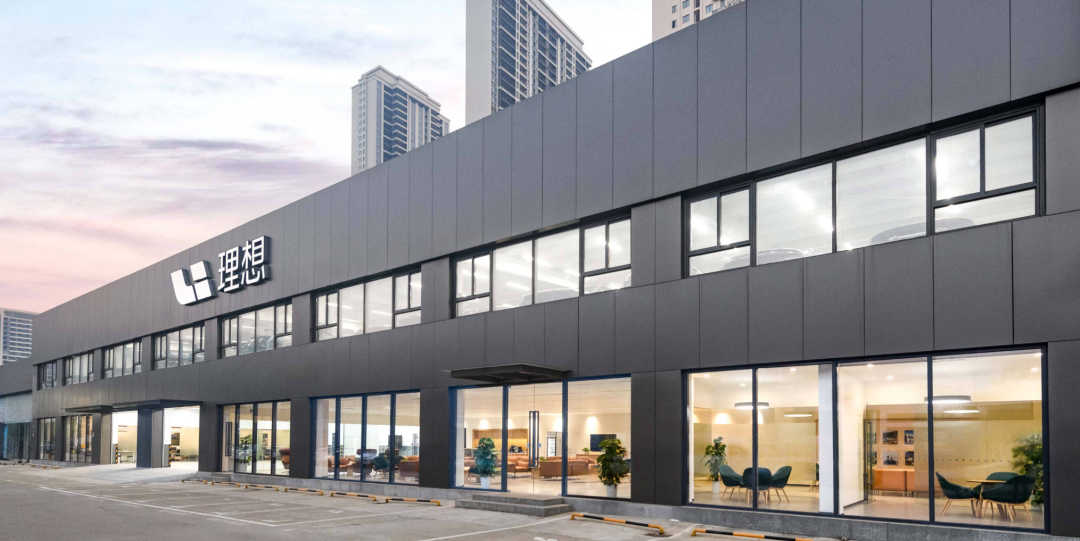
More importantly, Xiaomi's production capacity remains a critical shortcoming in the short term. Currently, the order delivery cycle for SU7 is still over six months, and YU7 has further increased the pressure. Despite multiple expansions, Xiaomi's Phase I factory has a monthly production capacity of only around 30,000 units. The Phase II factory is expected to commence production in July or August at the earliest, with an annual production capacity of 150,000 units, clearly insufficient to address the issue. Delivery delays will continue to be Xiaomi's biggest obstacle this year.
Of course, Xiaomi's production capacity will gradually increase. With Xiaomi recently acquiring land in Yizhuang, Beijing, and vigorously preparing for the construction of a Phase III factory, this shortcoming will be addressed in the future.
In other words, the "downtime" Xiaomi leaves for its competitors due to production capacity issues may be at most one year, after which such opportunities will diminish.
Just like the smartphone market years ago, the NEV market is undergoing rapid updates and iterations. One year is enough to change many things. In the past, new forces have been hampered by production capacity issues, impacting new products' follow-up momentum or even being directly dragged down. While Xiaomi doesn't need to worry too much about the latter, during the long waiting period, a considerable proportion of users will test drive other products, benefiting Li Auto. Whether Li Auto can seize the opportunity to convert potential YU7 buyers into its own users depends on its future countermeasures and adaptability.
In summary, while Xiaomi YU7 has its preemptive advantages, it also has disadvantages—Xiaomi has "shown its hand," while Li Auto still has more room for maneuver and change.
Furthermore, the automotive race is a long-term battle. Currently, Xiaomi's ecosystem synergy and marketing capabilities are its sharpest weapons, but there's still a gap in technology and supply chain maturity compared to Li Auto, which has been deeply entrenched for some time. In the long run, competition will ultimately come down to basics such as supply chain management, technology research and development, organizational capabilities, and execution efficiency.
Li Auto has repeatedly proven its foresight and resilience, changing the industry's ingrained perceptions with its actual performance. Anyone can succeed in a "favorable wind situation," but "turning the tide against the wind" is the true test of a company's strength. Now the pressure is on Li Auto. How will Li Xiang respond next?
WeChat ID | TMTweb
Official Account | Photon Planet

